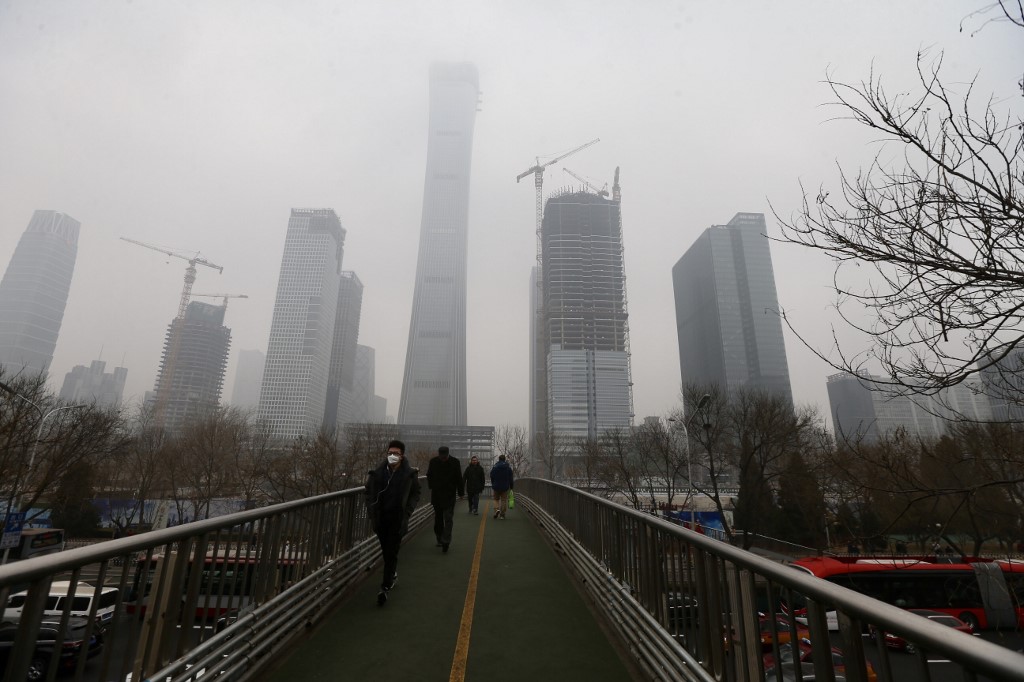- Europe may lead in ESG investing and disclosure, but Asia is catching up
- China and Singapore at forefront of region’s bid to clean up its act
Sustainable investing is taking off in Asia Pacific. Institutional investors accelerated their environmental, social and governance (ESG) investments last year as a result of the COVID-19 pandemic. The global health and economic crisis has raised the importance of ESG issues among investors highlighting how catastrophic events such as those exacerbated by climate change can impact investment returns.
In Asia, we have started to see more companies and investors making net-zero commitments. Take China as an example. While the country is the highest carbon-emitting economy in the world, it is also investing heavily in industries to support a transition to a cleaner economy. In 2020, China explicitly stressed environmental objectives such as “Beautiful China” 2060 net-carbon neutrality and green development funding, underpinning its resolve to becoming a green superpower.
While the rate of adoption of ESG analysis and integration has certainly increased in the past year, Asia faces unique challenges that it’ll need to overcome before it can truly be said to be a global leader in sustainable investing.
Playing Regulatory Catch-Up
There’s no denying that regulators and industry bodies play an important role in progressing the ESG and sustainability agenda. Broadly speaking, regulations around sustainable investing are more robust in Europe.
For example, the EU Sustainable Finance Disclosure Regulation (SFDR) has imposed new transparency obligations and periodic reporting requirements on asset management firms at both a product and manager level. Most provisions of SFDR have been in force since March this year. The form and content of the disclosures can be highly prescriptive.In this regard, Asian investors may lag their European counterparts on ESG disclosure because they lack the rigorous regulatory obligations that Europe has introduced.
That said, many Asian investors are still widely considered to be global leaders and are in fact, leading their North American peers. Asian regulators and policymakers are also starting to introduce similar sustainability-focused policies as we have seen in Europe. Examples like the Green Finance Industry Taskforce (GFIT) in Singapore, and the Green and Sustainable Finance Cross-Agency Steering Group in Hong Kong should start to drive better integration of environmental risks and facilitate more consistent and comparable disclosures across financial institutions. The proposed taxonomies being developed are going to be very useful, although it may be a little painful getting there. Markets developing their own taxonomies will be looking very closely towards the European taxonomy for consistency. Over time, we expect harmonisation across those taxonomies; however, it is going to take a while because they have been developed embryonically in their own local markets.
A Matter of Culture
Asian investors are also typically a couple of steps behind their Western peers in fully integrating their ESG beliefs into processes such as manager selection, investment stewardship and reporting. Hence, engagement on climate and other ESG issues may appear to be lagging in Asia compared to Europe or United States. However, there is a cultural element to this. In the US, engagement is very public.
 Asset managers or owners are fairly forthright and will file a shareholder proposal and tell companies what they want. But that approach does not lend itself well to Asian cultures and the importance of building relationships based on trust. Investors need to come to the table with skin in the game, a willingness to actively listen and engage over the long-term, and a focus on creating lasting value for all stakeholders. Investors need to explain why, for example, water risk is material for a semiconductor manufacturer – and listen too. The approach may be slower, but it is effective. Calm conversations behind closed doors in a setting of trust leads to good outcomes. It does not make for great headlines, but it does make for sustainable companies.
Asset managers or owners are fairly forthright and will file a shareholder proposal and tell companies what they want. But that approach does not lend itself well to Asian cultures and the importance of building relationships based on trust. Investors need to come to the table with skin in the game, a willingness to actively listen and engage over the long-term, and a focus on creating lasting value for all stakeholders. Investors need to explain why, for example, water risk is material for a semiconductor manufacturer – and listen too. The approach may be slower, but it is effective. Calm conversations behind closed doors in a setting of trust leads to good outcomes. It does not make for great headlines, but it does make for sustainable companies.
Integrating ESG into the Investment Process
Asian investors looking to get a head start in ESG should get back to the basics – a clear understanding of what ESG investing is and what it is not. We have found common misconceptions among investors about sustainable investing, such as the notion of a trade-off between sustainable investment and returns or inflexible exclusions that might inhibit returns. Ensuring all stakeholders in a given investment organisation are on the same page on their beliefs around ESG investing is critical in forming a firm foundation for sustainable investment governance.
An Asian insurer, for example, may have a strong belief that climate change presents a business risk to their organisation. It is natural that their responsible investment policy would have a strong focus on climate change, because it is consistent with the way they think about the risks to the wider business.
Beliefs are the right place to start and the place to always come back to. They form the basis of the ESG policy which outlines how ESG gets integrated throughout the investment process from informing the risk appetite, setting the strategic asset allocation, to influencing manager selection and providing an enhanced framework for assessing portfolio results.
Getting it Right
Beyond beliefs or an ESG statement available or a corporate website, investors who are serious about sustainable investing need to outline how their ESG commitments are reflected in actual portfolios.
There are four major approaches to sustainable investment implementation: integration, stewardship, thematic or impact investment, and screening. These can be used in tandem to create desired outcomes within the portfolio, in order to align with ESG and climate change beliefs and policies.
Firstly, investors should integrate ESG and climate change-related risks and opportunities into their investment strategy, for example, through climate change scenario analysis.
Secondly, investors should demonstrate good stewardship by engaging at the company level (whether through voting, or private engagement), as well as at an industry or regulatory level. For asset owners, this can include reviewing manager stewardship practices and monitoring voting and engagement activities and outcomes.
Thirdly, more and more investors are starting to allocate to sustainability themes such as renewable energy, energy efficiency, water, waste, healthcare, agriculture and timber. At the same time, investors are starting to allocate to low carbon, Paris-aligned, or sustainability tilted passive investments, particularly within listed equity.
Finally, investors may also seek to avoid investing in companies or sectors that present too great a sustainability risk that cannot be compensated for. The most common exclusions we see globally are around tobacco and increasingly, carbon intensive fossil fuels that will potentially be left stranded in the transition to low carbon.
ESG investing – in practice – is becoming increasingly complex and innovative by the day but it’s definitely here to stay. Through greater education, awareness as well as more robust regulatory commitments, Asia will be well placed to take the lead in the world’s path to sustainability and stability.
Alexis Cheang is Head of Sustainable Investment for the Pacific region at Mercer.
























